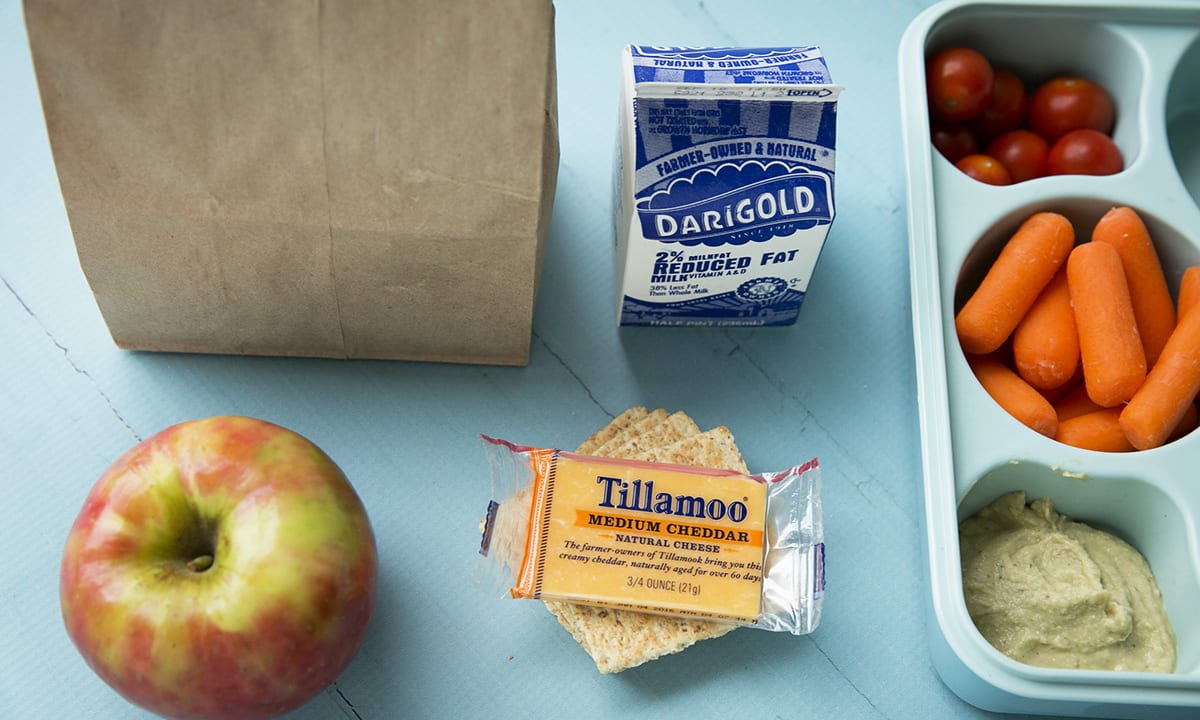The art of packing a nutritious lunch

At a glance
- A wholesome lunch should include three to five food groups with a variety of colors, textures and nutrients
- Include protein, complex carbs, healthy fats and a hydrating beverage
- Enlist your child’s help to ensure they’ll eat the lunch you pack for them
Bento-style box? Insulated sack? Brown paper bag? The choices when it comes to lunch containers are dizzying, yet what matters most is not what kind of box, sack or bag you get for your child, but what you put inside.
“One of the benefits of packing your child’s lunch is that you know what they’re eating — you can ensure they have access to foods they like and foods that are going to sustain them throughout the day,” says Erica Lewis, RD, health promotion program manager at the MultiCare Center for Health Equity & Wellness.
What to pack in your child’s lunch
Whether you’re packing leftovers or starting from scratch, a wholesome lunch should include three to five food groups so kids have a variety of colors, textures and nutrients to choose from.
Protein. Among the food groups represented in your child’s lunch should be protein.
“Protein powers kids’ brains throughout the day, so they stay alert and focused,” says Lewis.
Peanut butter and meat are well-known sources of protein. Some alternatives your child might enjoy include hummus, yogurt-based dips, cooked quinoa, roasted chickpeas, string cheese and cottage cheese.
Complex carbs. Pair protein with complex carbohydrates, which keep kids energized. Complex carbohydrates include whole grains as well as fruits and vegetables. Try trading out traditional white sandwich bread for whole wheat pita pockets or bagels. Popcorn and homemade trail mix are nutritious whole-grain substitutes for chips.
To get the most out of your fruits and vegetables, leave the peel on, if it’s edible.
“That outer layer contains a lot of fiber and nutrients, which can fortify kids during those long afternoon stretches,” says Lewis.
Healthy fats. One food group that is often vilified is fats, yet fats are critical for proper brain development in children. They also leave kids feeling full and satisfied after a meal. Healthy sources of fat to add to your child’s lunch include avocado or guacamole, olives, sunflower seeds or pumpkin seeds, edamame, or hard-boiled eggs.
Hydration. Once you have a lunch full of nutritious, tasty goodies, don’t forget a beverage.
“Most of us don’t drink enough fluids,” says Lewis. “Dehydration can lead to fatigue and make it difficult for kids to retain what they’re learning.”
Water is best; however, you can jazz up the flavor by adding a few slices of fruit or a little bit of lemonade to your child’s water bottle. If you pack a juice box, read the label and ensure it’s made with 100 percent juice.
How to pack your child’s lunch so they’ll eat it
So you’ve packed a nutritious meal for your child brimming with fruits, vegetables, whole grains, healthy fats and protein that will fuel their curious minds and their growing bodies. But what if they don’t eat it?
Cut back on the variety. “Trust your child to eat as much as they want at lunch, which is also a time for socializing and relaxing,” says Lewis. Perhaps experiment with packing less — while variety is good, too much variety can be overwhelming for some children.
Enlist their help. Kids are more likely to eat what you pack if you involve them in the process. Talk to them about the different food groups and give them options to choose from within each category. Young children may enjoy participating in the meal prep — for example, watching you chop vegetables and then putting them in a container. Older children, or those in sixth grade and above, may prefer to pack their own lunch.
Be mindful about introducing new foods. Lunch may not be the ideal time to spring new flavors on children, particularly if they are picky eaters.
“It’s often more effective to introduce new foods during family mealtimes, and it tends to take multiple exposures for a child to decide they like certain foods,” says Lewis.
Be creative. “There’s a strong connection between emotion and food. Kids who are excited about the contents of their lunchbox are more compelled to chow down,” Lewis says.
For example, incorporating a rainbow of fruits and vegetables can help make mealtime not only healthy but also visually enticing. Another way to stir up some fun is to make traditional lunch fare look different. For example, instead of using bread for a peanut butter and jelly sandwich, use a whole wheat tortilla. You can also use cookie cutters to transform run-of-the mill sandwiches and snacks into whimsical shapes.
Of course, not everybody has the time to make a homemade lunch and that’s OK, too. Getting lunch at school exposes your child to foods outside of their home, while also providing a full nutritious plate.



